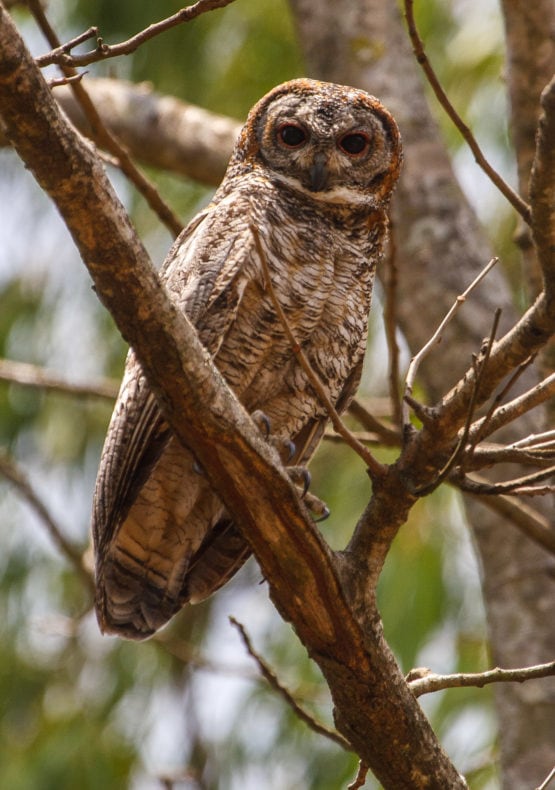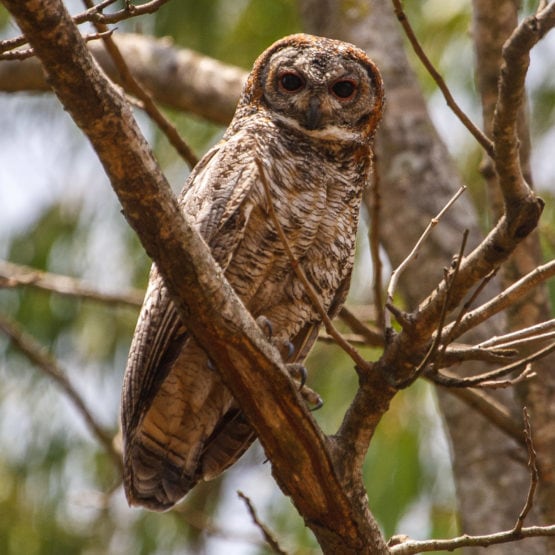Located in the Indian state of Gujarat, Gir National Park is the only site remaining in India for the Asiatic Lion. The local population is currently doing well with an estimated 600 lions, and the park also has a healthy population of Leopards. Birds here include Mottled Wood Owl, Brown Fish Owl, Jungle Nightjar, Painted Sandgrouse, Indian Pitta, Red-naped Ibis, Red-headed Vulture, Short toed Snake Eagle and Barred Buttonquail.
Target Species
- Indian Peafowl
- Jungle Nightjar
- Indian Nightjar
- Painted Sandgrouse
- Yellow-footed Green Pigeon
- Barred Buttonquail
- Indian Stone-curlew
- Yellow-wattled Lapwing
- Red-naped Ibis
- Black-winged Kite
- Egyptian Vulture
- Crested Honey Buzzard
- Indian Vulture
- Red-headed Vulture
- Short-toed Snake Eagle
- Changeable Hawk-Eagle
- Indian Scops Owl
- Brown Fish Owl
- Mottled Wood Owl
- Laggar Falcon
- Indian Pitta
- Marshall’s Iora
- White-bellied Minivet
- Black-headed Cuckooshrike
- Indian Paradise Flycatcher
- Rufous-fronted Prinia
- Grey-breasted Prinia
- Tawny-bellied Babbler
- Yellow-eyed Babbler
- Red-breasted Flycatcher
- Black Redstart
- Endemic
- Near Endemic
Itinerary
Day 1: Arrival at Sasan Gir
After checking in to the Gir Birding lodge and lunch, an afternoon jeep safari inside the Park will hopefully produce your first Asiatic Lions. The dry deciduous forest is famous as the only remaining site in the world for the Asiatic Lion. This subspecies of Lion once ranged from the edge of Europe in Turkey, all across Asia to eastern India, but was driven almost to extinction by hunting. Thankfully numbers have recovered to several hundred now, but with the entire population restricted to an area less than the size of Greater London, they are precariously vulnerable to disease, poaching, and have to share much of this land with an increasing human population and their cattle and crops. Leopard, Jungle Cat, Striped Hyena, and Golden Jackal are also frequently encountered.
Days 2-3: Gir National Park
Morning and afternoon wildlife safaris will undoubtedly produce many birds, specialities here including Indian Thick-knee, Brown Fish and Mottled Wood Owls, Indian Pitta, Egyptian Vulture, Changeable Hawk Eagle, Laggar Falcon, Black-headed Cuckooshrike, White-bellied Minivet, Indian Paradise Flycatcher, Marshall’s Iora, Tawny-bellied and Yellow-eyed Babblers, and Rufous-fronted Prinia. It is also worthwhile taking a walk in surrounding areas of the forest, and a worthwhile visit is to Crocodile Dam, where Marsh Mugger crocodiles are bred for restocking in the sanctuary.
Day 4: Sasan Gir to Delhi
After breakfast, check out and return to Delhi.
Checklist
For all our bookings we provide the most accurate and useful printable checklists available, specific to the actual areas you are likely to visit. In the meantime, use our interactive state checklists, or view the species bar chart for this area on eBird:

Important information

As with all Bubo Birding tours, your booking is handled by Asian Adventures.
- We may change the itinerary described due to various reasons such as latest birding information, availability of accommodation, state of the roads, and other unexpected factors that, this being India, do pop up from time to time!
- We would be happy to make any additional travel bookings, e.g. domestic flights, car and driver, that you require.
- The final price and itinerary will be confirmed before booking and depending on your expected arrival and departure plans.
See Asian Adventures for full tour details, including accommodation, meal plans, what's included, other exclusions, prices for different group sizes, single room supplements, cancellation policy, and booking process.

